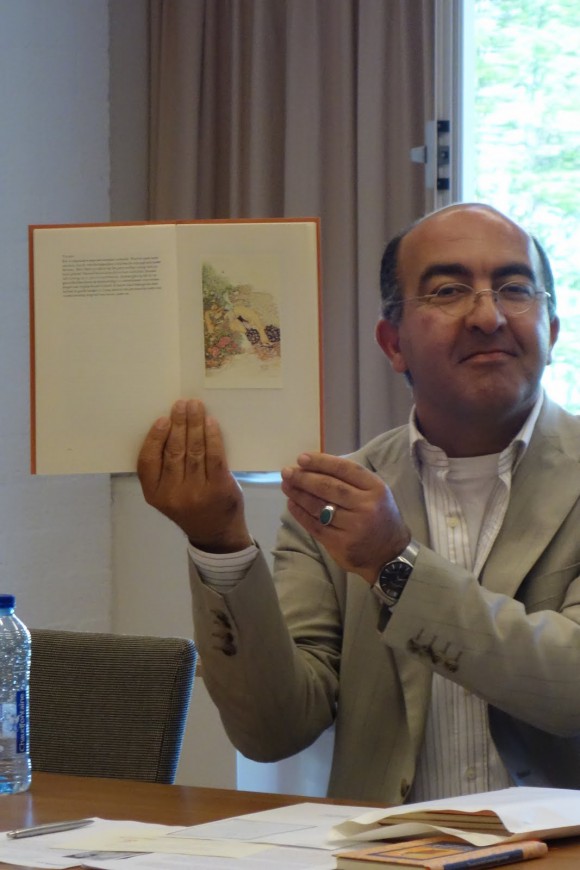 Michael Skau, emeritus professor with the University of Nebraska at Omaha, recently published an article in the Journal of Popular Culture titled: “Jack Kerouac’s Rubáiyát: The Influence of Omar Khayyám” (vol. 48, No. 3, 2015).
Michael Skau, emeritus professor with the University of Nebraska at Omaha, recently published an article in the Journal of Popular Culture titled: “Jack Kerouac’s Rubáiyát: The Influence of Omar Khayyám” (vol. 48, No. 3, 2015).
Almost all of the Kerouac studies have ignored the influence of FitzGerald’s Rubáiyát in his life and work. The Rubáiyát provides significant similarities to Kerouac’s dualistic viewpoint: “the extremes of innocent indulgence of the beautiful variety of life and bitter, or even perverse, acceptance of the desolation of mortal existence”. The author, expert in ‘Beat poetry’ (Corso, Ferlinghetti, Burroughs, Ginsberg) points to numerous allusions to and echoes from Khayyám’s poetry, not only in On the road but in his other novels, essays and letters as well.
In a letter to Stella Sampas, his third wife, he writes: “When I’m an old man I’ll at least have my jug of wine and a loaf of bread too”. Another example of how Kerouac looks upon life is his lament on this world “which made us, but only imperfectly, that is to say unsuited to its every barb and to most of its insuitable commandments […] I never asked to be made, and so unsuited born”. To the reader this almost immediately brings to mind the book of pots . Skau’s conclusion:
For Kerouac and FitzGerald, the intertwining of delight and sadness, of happiness and dreariness, cannot be denied. Both writers find that the approach toward life is one of bright melancholy, a mournful smile, a reminder that the rose is both flower and thorns. They cannot deny the twin poles of human experience, a “triste Plaisir” that continues to resonate with their readers.
Skau’s nice and very well readable article is an almost inescapable invitation to get back On the Road again for a new experience.
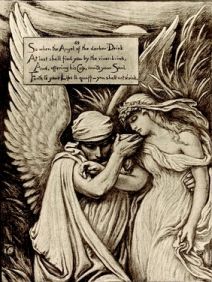 devastating medieval plagues.
devastating medieval plagues.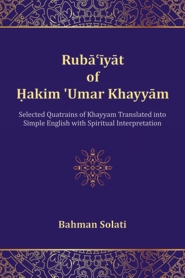 English with spiritual interpretation. Edited and translated by Bahman Solati. Boca Raton, Universal-publishers, 2015. 109 pp. ISBN: 978-1-62734-033-5.
English with spiritual interpretation. Edited and translated by Bahman Solati. Boca Raton, Universal-publishers, 2015. 109 pp. ISBN: 978-1-62734-033-5.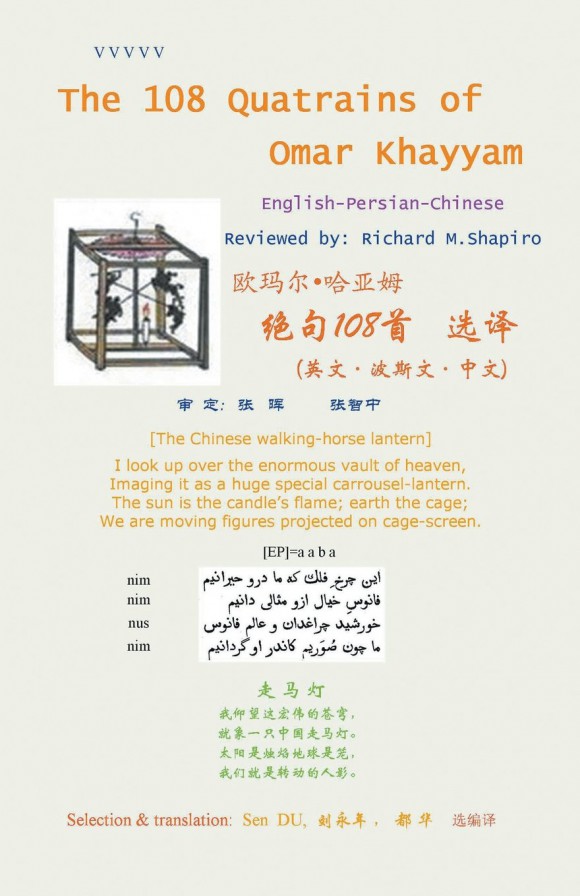
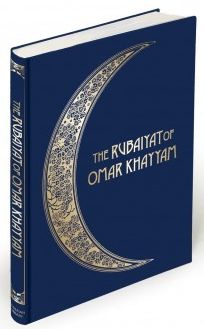 Bodleian Library issued a reprint of the edition of the Rubáiyát that was illustrated by René Bull (1872-1942). Bull started his career studying engineering in Paris where he soon switched to the art of illustrating. When he settled in London in 1892 he started to draw for newspapers and magazines, and from 1898 till 1900 he worked as a photographer in India, Sudan and South Africa, where he covered several campains. Bull also illustrated “The Arabian Nights”, “The Russian Ballet” and “Andersen’s Fairy Tales”.
Bodleian Library issued a reprint of the edition of the Rubáiyát that was illustrated by René Bull (1872-1942). Bull started his career studying engineering in Paris where he soon switched to the art of illustrating. When he settled in London in 1892 he started to draw for newspapers and magazines, and from 1898 till 1900 he worked as a photographer in India, Sudan and South Africa, where he covered several campains. Bull also illustrated “The Arabian Nights”, “The Russian Ballet” and “Andersen’s Fairy Tales”. Michael Skau, emeritus professor with the University of Nebraska at Omaha, recently published an article in the Journal of Popular Culture titled: “Jack Kerouac’s Rubáiyát: The Influence of Omar Khayyám” (vol. 48, No. 3, 2015).
Michael Skau, emeritus professor with the University of Nebraska at Omaha, recently published an article in the Journal of Popular Culture titled: “Jack Kerouac’s Rubáiyát: The Influence of Omar Khayyám” (vol. 48, No. 3, 2015).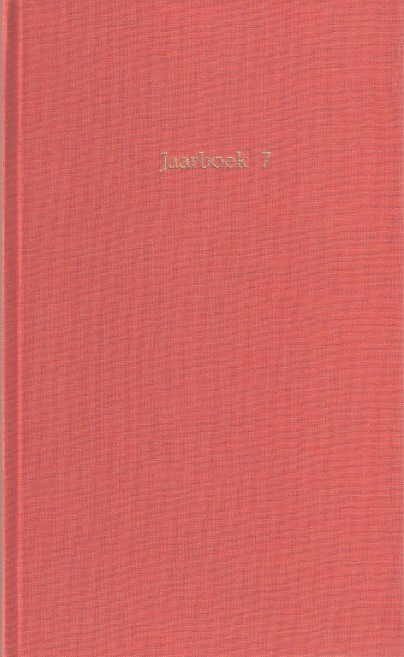 Jaarboek 7. 25 jaar Genootschap is now published, as always by Avalon Pers, Woubrugge. The book contains a number of shorter articles in which the members of the Club look back onto their membership. Jos Biegstraaten, president from 1990 till 2014, presents a short history of the Society. Hans de Bruijn ponders on the eternal and unanswered questions surrounding the origins of the rubáiyát. Jos Coumans explains how and why he started to collect the editions of the rubáiyát. For Marco Goud the exploration of life and work of the Dutch poet P.C. Boutens leads to confrontations with Khayyám’s influence on Boutens’ work he cannot evade. Rokus de Groot first encountered Khayyám’s poetry in the leather workshop of Stavros Melissinos in Athens, who presented him with a signed copy of his ‘Persian Rubáiyát’. Johan ter Haar is fascinated by the diversity of interpretations of Khayyám’s poetry that range from pure mysticism to sheer nihilism, and Remi Hauman looks at the rubáiyát as a collective, national oeuvre by various Persian ghostwriters, with international dimensions. For Dirk Meursing the Society was a useful and joyful resource while working on his own translation, and Asghar Seyed-Gohrab, now president, remembers how in his youth in Tehran he was fascinated by the secrets and mysteries that Khayyám’s verses seemed to conjure. Jos Biegstraaten finally describes how Khayyám influenced the work of the Dutch graphic artist Siep van den Berg.
Jaarboek 7. 25 jaar Genootschap is now published, as always by Avalon Pers, Woubrugge. The book contains a number of shorter articles in which the members of the Club look back onto their membership. Jos Biegstraaten, president from 1990 till 2014, presents a short history of the Society. Hans de Bruijn ponders on the eternal and unanswered questions surrounding the origins of the rubáiyát. Jos Coumans explains how and why he started to collect the editions of the rubáiyát. For Marco Goud the exploration of life and work of the Dutch poet P.C. Boutens leads to confrontations with Khayyám’s influence on Boutens’ work he cannot evade. Rokus de Groot first encountered Khayyám’s poetry in the leather workshop of Stavros Melissinos in Athens, who presented him with a signed copy of his ‘Persian Rubáiyát’. Johan ter Haar is fascinated by the diversity of interpretations of Khayyám’s poetry that range from pure mysticism to sheer nihilism, and Remi Hauman looks at the rubáiyát as a collective, national oeuvre by various Persian ghostwriters, with international dimensions. For Dirk Meursing the Society was a useful and joyful resource while working on his own translation, and Asghar Seyed-Gohrab, now president, remembers how in his youth in Tehran he was fascinated by the secrets and mysteries that Khayyám’s verses seemed to conjure. Jos Biegstraaten finally describes how Khayyám influenced the work of the Dutch graphic artist Siep van den Berg.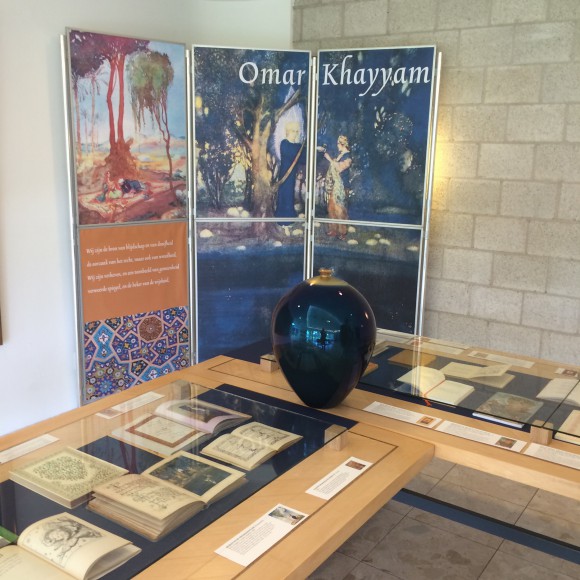 A short video clip was made of the exhibition at the Sufi Masters of Love conference, held June 13th, 2015. (See the previous
A short video clip was made of the exhibition at the Sufi Masters of Love conference, held June 13th, 2015. (See the previous 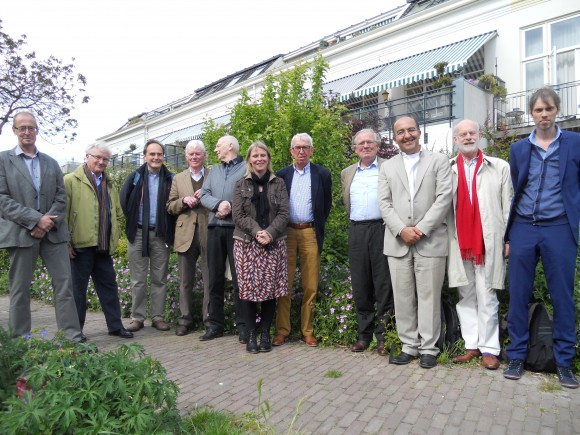 From left to right: Jos Coumans, Hans de Bruijn, Marco Goud, Dirk Meursing, Jos Biegstraaten, Gabrielle van den Berg, Johan ter Haar, Jan Keijser, Asghar Seyed-Gohrab, Rokus de Groot, Remi Hauman.
From left to right: Jos Coumans, Hans de Bruijn, Marco Goud, Dirk Meursing, Jos Biegstraaten, Gabrielle van den Berg, Johan ter Haar, Jan Keijser, Asghar Seyed-Gohrab, Rokus de Groot, Remi Hauman.